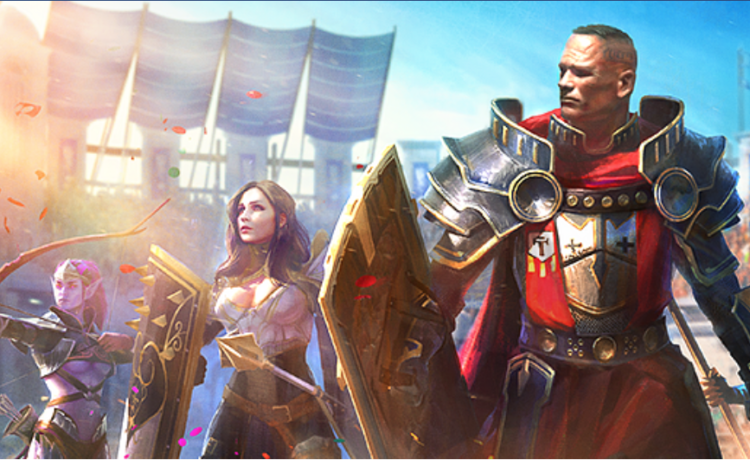Introduction
If you played any mobile games during the months of March or April 2019, you likely saw an ad (or twenty) for a game called Raid: Shadow Legends (from Israeli developer Plarium, of Vikings: War of Clans and Lost Island, Blast Adventure).
After an 8-month closed Beta period in 2H-2018, Raid Shadow Legends shot out of the gates during the first week of March, with an aggressive paid User Acquisition campaign that peaked in mid-April before returning to a healthy steady-state by early May.
To its target demographic, the game touted in the video ads seems comfortable and familiar: a Collectible Character RPG (CCRPG) reminiscent of Summoners War, but with a flashy modern facelift, and gritty, realistic, high-poly characters.
Being myself a card-carrying member of the target demo, I decided to take it for a quick spin…
Things didn’t quite go as planned. Six sleepless weeks later, having invested an irresponsibly large amount of time and money, I decided to share a quick post-mortem as I finally extricate myself from this unholy addiction.
Here are four key reasons why Raid has succeeded thus far, and why I believe it will be a staple in this genre for some time.
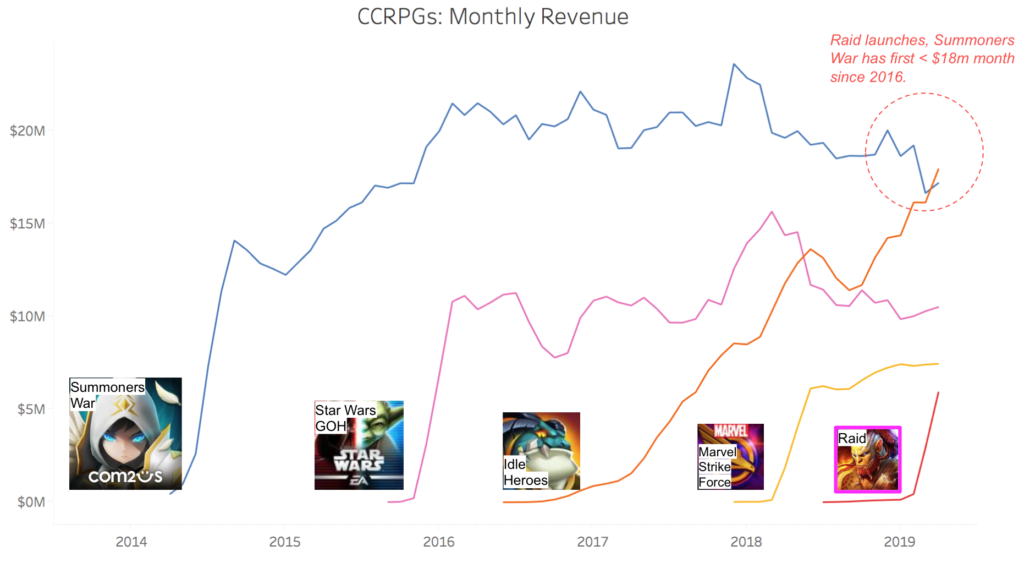

1- Plarium made a smart bet, on a large gap in a lucrative market.
2014’s Summoners War established a highly-successful legacy in the ‘character collection rpg’ space, with some innovations that significantly increased retention and spend depth. Furthermore, SW showed that this model could be a sustainable long-term driver of revenue ($20m monthly since Jan 2016).
Since 2016, two successful new entrants in the CCRPG space were tied to major IP (Star Wars, Marvel). Both needed to scale back complexity in order to capitalize on the reach of their respective brands, and did so via more accessible structures like the simplified ‘character shards’ and gearing systems pioneered by Heroes Charge. These systems make the game more approachable for the average player, but at the expense of opportunities for creativity and player agency in making, e.g. my Darth Vader perform differently from yours. Each character’s progression arc and possible role in a team became fixed and predetermined.
In some ways it’s surprising that Summoners War’s player base has been left alone for so long without major disruption. The game’s 2014 art is somewhat dated and leans cartoony and cutesy despite the game’s arguably hardcore mechanics and players. But with each passing year of proven performance, the red carpet unfurls a bit further, inviting any would-be successor to steal the throne.
In theory, such a successor would only need to be slightly more appealing to Summoners War’s devoted players, i.e. offer everything that made Summoners War great, sprinkle in a bit more character customization depth, add a fresh and updated look, and, of course, hundreds of new characters to collect and develop.
I don’t mean to understate the scope of such an endeavor, but for a publisher with the budget to invest, it seems a juicy opportunity! I suppose it was only a matter of time.
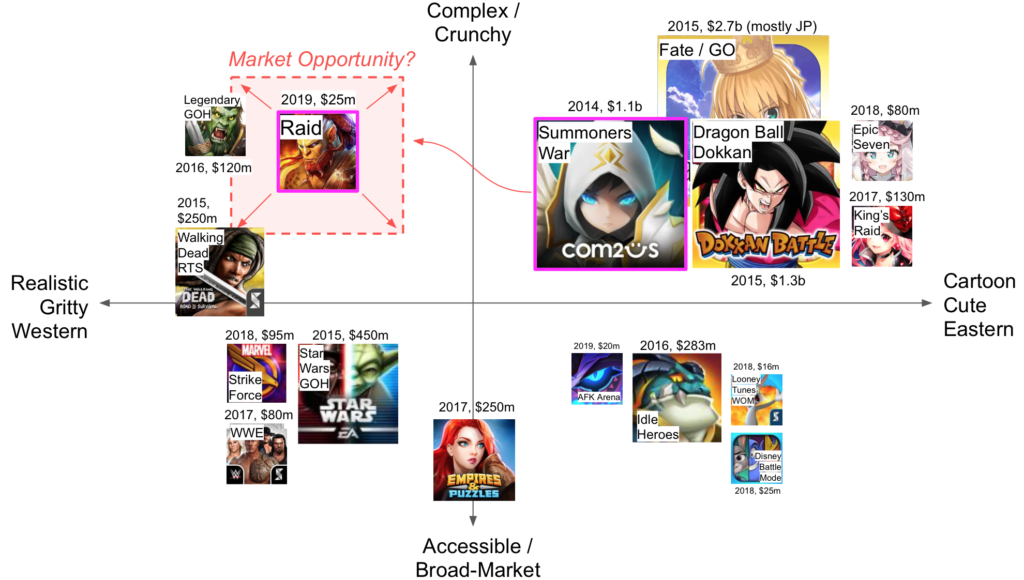


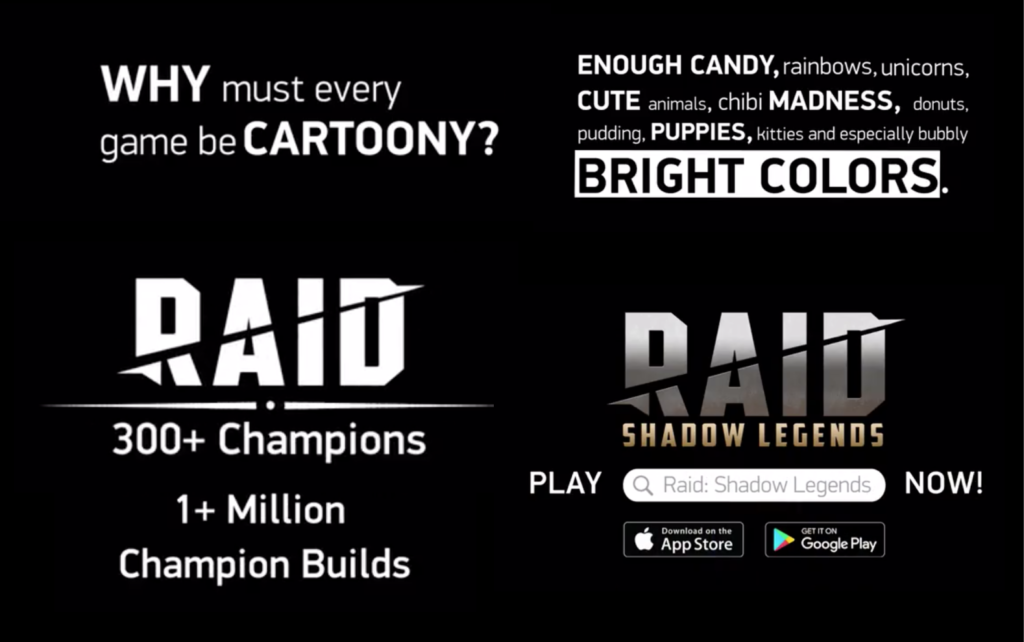
One of the greatest challenges for RSL will be winning a significant share of the extraordinarily lucrative Japanese CCRPG market, which provides the majority of revenue fueling $1b+ titles like Dragon Ball Z: Dokkan Battle and Fate / Grand Order.

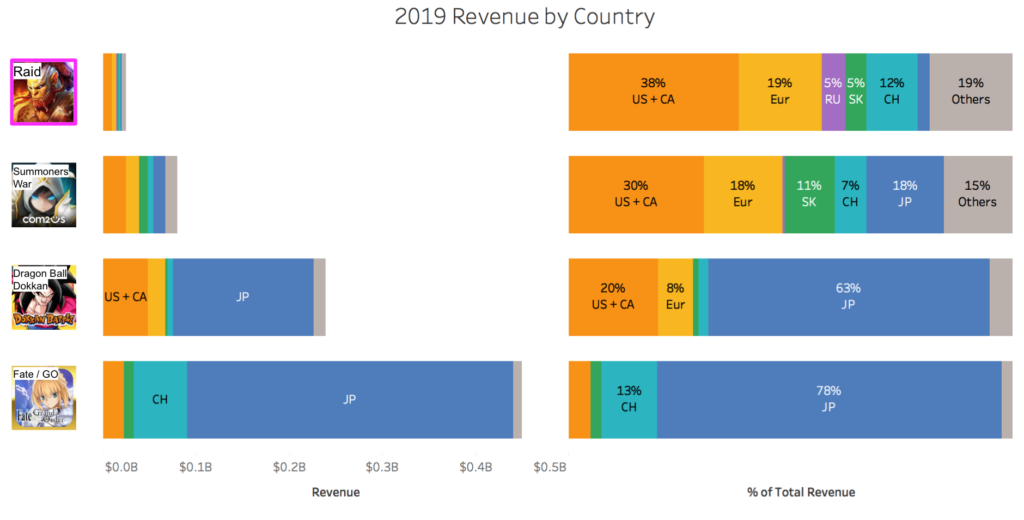
If RSL fails to win a significant share of the Japanese market, it still has a great shot at becoming a $250-$400m title. But with Japan’s support, it could surpass $1b.
2. Plarium used innovation sparingly, and only to fulfill their Unique Selling Propositions.
If your goal were to dethrone Summoners War while minimizing risk, your product goals might sound something like the following:
- Start with Summoners War (all core features) as your baseline.
- Make your primary innovation target modern, gritty, western character art and UI. Omit SW’s city-building elements and world map (unnecessary for USP). For UI / UX, prioritize efficiency of navigation and character progression.
- Make your secondary innovation target deep character roster and customization. Launch with 300+ characters across 16 factions. Add 1-2 new dimensions to character progression, enabling deeper customization.
Given the approach above, the major challenges would be:
- Art pipeline (must nail both quantity and quality)
- UI / UX (given many dense screens and features needing coherent organization)
- Overall feature scope (many polished systems needed at launch)
- Overall quality risk (product must be preferable to competitors at worldwide launch)
To stack the odds in your favor, you would want to do as much as possible to minimize #3 and #4 (scope and quality risk). In other words, you would want to adhere as closely to the Summoners War formula as possible, deviating only where absolutely necessary.




3 – Plarium leveraged a core strength: 3d character art
It seems that Plarium identified their core, unique strengths, and then chose a project where they could directly monetize them.
From LinkedIn, Plarium appears to have 100+ 3D character and concept artists at their Ukraine and Russia studios. That would be more character artists than any other publisher in Ukraine (with the exception of Room 8, an art outsourcing firm that may have lent additional support).
Lacking this capability, they would have likely pursued a very different product strategy.
For any CCRPG, the player-collectible characters are both your critical content path and the focal point for IAP spend depth, and thus must feel shiny, valuable and special, worthy of whale-scale investment. In other words, you need both quantity and quality, no easy feat for a new game challenging established competitors.
But Raid managed to pull it off, launching with 300 characters that, with relatively few exceptions, look fantastic. Plenty of character modeling and texturing portfolio pieces in here.
PS: UI / UX: In similar fashion, elegant UI / UX is critical to a game of this depth, and Plarium’s large UI division (20+ designers and artists) did not disappoint.
PPS: Animation and Rigs: There is clearly a lot of animation (and rig) sharing across the 300-character roster, but with the staggering variety of models and skins it’s really easy to overlook that your Lizardman and Ice Queen have identical victory poses!

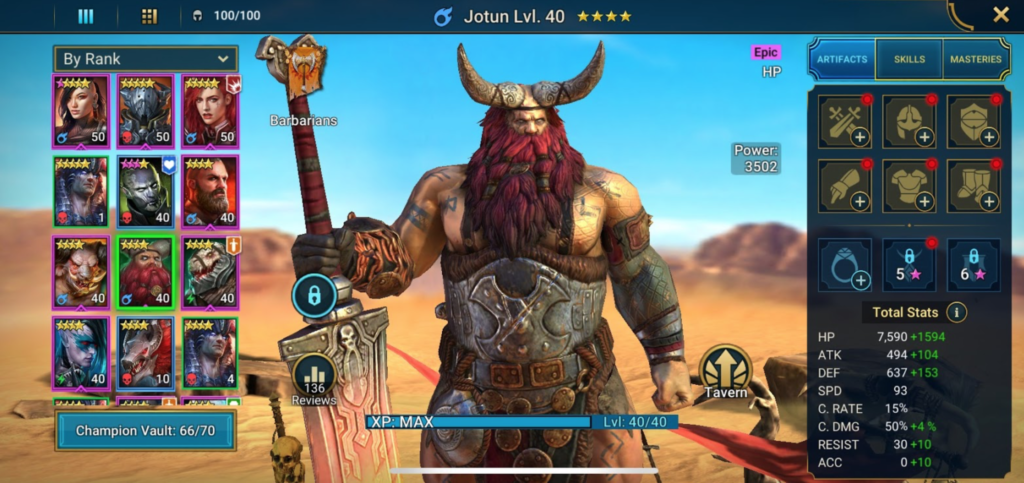


(Above) Full camera control lets you ogle your beautiful, 3d-rendered characters. Production values are quite high, and focused on what matters most in this genre.
4. Spend Depth, and more Spend Depth
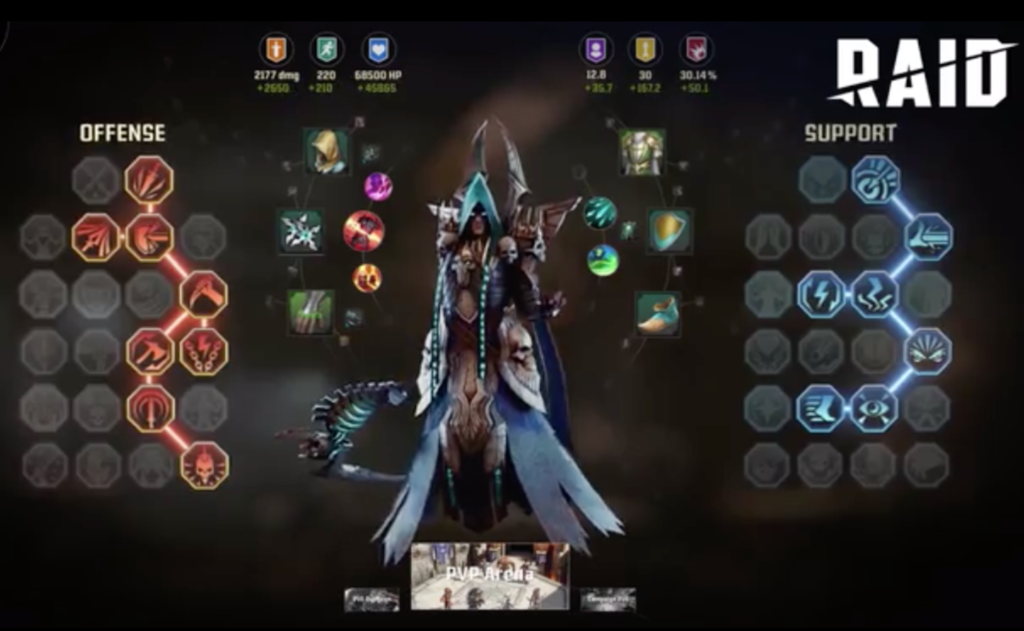

Raid’s ads include claims such as: “Choose development paths from hundreds of skills and masteries, “over 1 million possible champion builds,” and “Do more with your heroes than any other mobile RPG.”
To make good on this USP, Plarium borrowed the existing, proven systems from Summoners War, and added two new progression vectors: Masteries and the Great Hall.
The result is that each and every character is a profoundly deep resource sink (read: time and money). Each character needs to be leveled-up, ranked-up, ascended, skilled-up, equipped with the right gear and accessories (each of which must be leveled up), and then characters need their masteries upgraded, and great hall upgrades unlocked.
So if you haven’t heard from me over the past six weeks, now you know the reason.


Raid already has extraordinary content and spend depth for such a young product, and this is only just the beginning. It will certainly be interesting to see how the product develops from here (from a safe distance of course).
Wrapping up
Whew, that was cathartic! And with that, I can put this chapter behind me, and return to normal and responsible levels of productivity.
Well… maybe after one last round…

